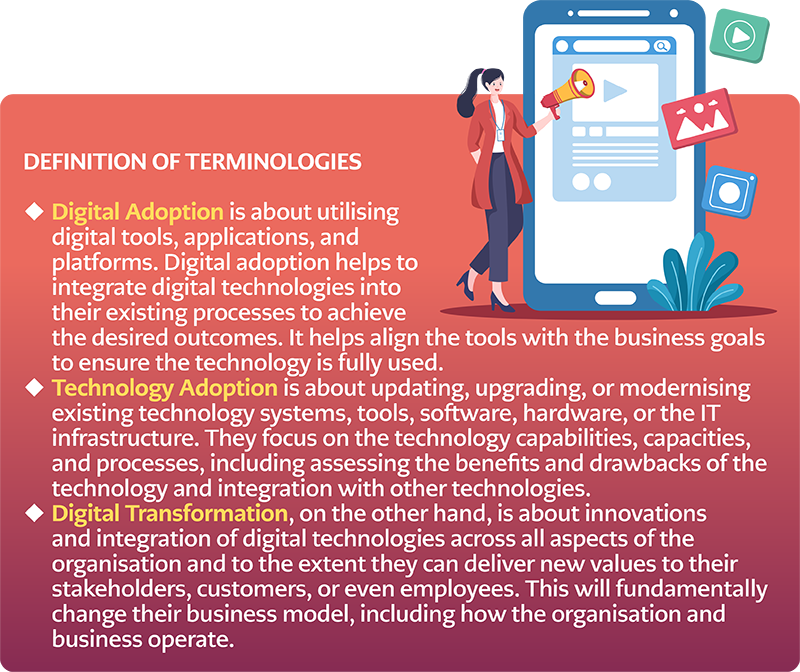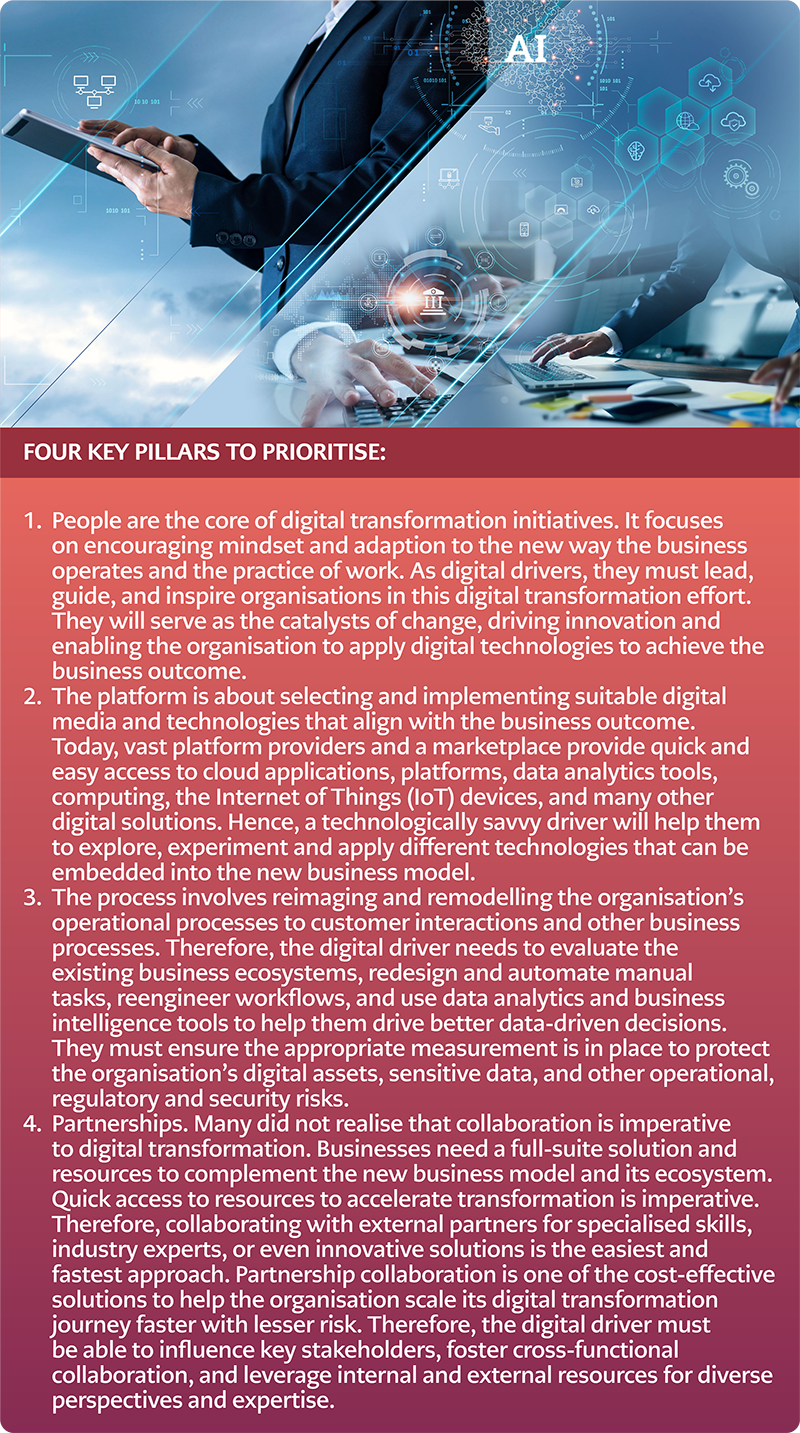Critical Traits as Digital Transformation Drivers
Digital transformation drivers actively leverage technology and innovative strategies to reshape their processes and industries while unlocking new opportunities for growth, efficiency, and connectivity in the increasingly digital world

Before investing in new digital transformation technologies, you must consider what drives the decision to adopt these new technologies.
When you talk to someone about Digital Transformation, the first reaction is they have already upgraded or automated their systems or adopted specific tools. But I was talking about Digital Transformation and not Digital or Technology Adoption. This perception led us to determine the right fit to drive the digital transformation journey.
Because of this perception, many assume the digital driver should be technically inclined. I beg to differ, so I spoke to some industry experts, and the consensus told me that digital transformation should be driven by someone who has blended technology savvy and human-centric skills, and I couldn't agree more.
I, therefore, reference my favourite book, "Think Like Amazon" by John Rossman. Similarly, he asked his audience, "What is digital?". Some suggested that it's about investing in mobile experiences, e-commerce, cloud computing, on-demand capabilities, and even application programming interfaces (APIs). He added digital transformation is about "being digital".
Then, I researched and came across an article, "Twelve reasons why digital transformation failed," written by Dr Corrie Block, an organisational behavioural expert. He said digital transformation is 80% soft skills and 20% technology. He realised it when he was tasked to lead and execute dozens of Artificial Intelligence and Digital Transformation initiatives.
The fact is that digital transformation is a broader version of leading IT solutions and services. Still, the difference is that the digital driver requires an understanding of the multi-facets of the business and the innovation that can induce growth for the industry to be competitive in this digital era.
The Ideal Traits
John Rossman also wrote that Jeff Bezos specifically wanted people dissatisfied with the existing ways of working to fit into the digital transformation team. These people are inspired to fix those little things. Those little things happen when organisations are mature, efficient, and profitable. However, innovations have been compromised. So, how do we justify these characteristics?

But digital transformation is not solely about adopting technologies. Digital Transformation is about a strategic shift to a new business model or a new way of work. To do that, businesses must innovate and leverage digital technologies to deliver value to their business with speed and agility. This will eventually change how the business operates; to do that, they will need to prioritise the four key pillars to execute it.
The four pillars are the People, Platforms, Processes, and Partnerships. Ultimately, digital transformation drives towards business outcomes. It is more beneficial to "Day Two" companies. "Day One" organisations primarily focus on their new solution and innovation. They strive to become the unicorn to disrupt the industries and have a footing in the market. Most of them are hungry for growth; hence, their priorities defer. Whereas "Day Two" organisations have been in operation for many years and are mature and structured, due to market shifts, some may become complacent, losing their glory and market share and even becoming bureaucratic.
These organisations need to reimage and explore new business models with innovative solutions to add value to their customers and businesses to stay competitive for survival and growth. Therefore, to fit into the traits, the four pillars became priorities to look at.

Having those priorities, being technology-savvy with a good understanding of various types of technology, and blended human-centric skills are the fundamental traits to lead the digital transformation journey. Digital transformation aims to drive towards the business outcome the organisation wants to achieve.
Whether we like it or not, we still need human intervention; hence, a human-centric driver with a strategic thinking mindset, a change advocator, and a collaborator will successfully navigate the change for the organisation.

Understanding that utilising digital transformation drivers extends beyond technology, the initial step involves analysing what requires alteration.

Elsie Low is the Consulting Director and Agile Coach for DXGIG@Valuelab, a Digital Transformation and Gig Economy Consulting and Coaching hub to help businesses and organisations bridge the gap and the digital divide. Elsie believes that digital transformation will impact the traditional way of work. Hence, she encourages organisations to set the pace for tomorrow by leading, thinking, and governing the digital transformation journey.




